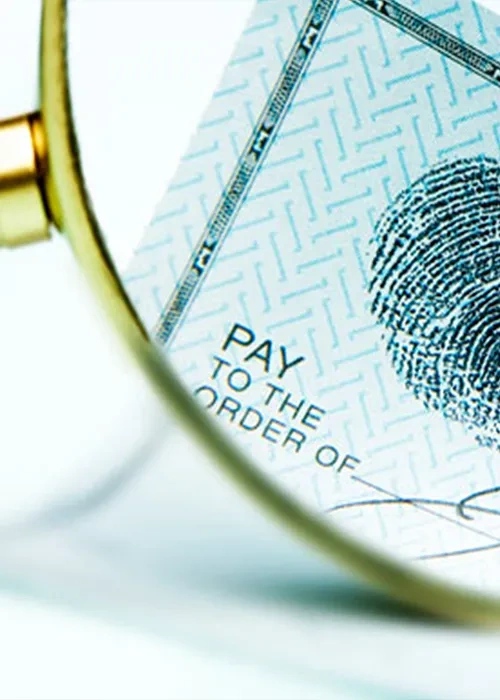Check Volumes are Declining, But Check Fraud is Rising: What’s it Costing your Financial Institution?
Thompson Reuters reports that U.S.-based banks and credit unions have seen “soaring volumes of suspicious financial activity” over the past three years. Their ‘Suspicious Activity Reports 2023’ sites market disruptions due to COVID-19, technological shifts, and growing vulnerable populations as key drivers for the spike. And, of all suspicious activity reports (SARs), check fraud was ranked the second largest SAR category last year, nearly doubling its 2021 figure.
With recent emphasis on cyber security and digital payments, criminals are now exploiting gaps within deposit channels, as well as the postal system – reviving an old scheme called “mail fishing,” or “mail theft.” This check fraud scheme involves stealing personal, business, and other types of paper checks from mail carriers. With increased attempts during the pandemic when criminals targeted government relief checks, mail fishing has continued with such a momentum that financial institutions have since warned account holders to avoid mailing checks altogether, or to use secure methods of sending/receiving.
No financial institution – large or small – is protected from transaction or check fraud. In fact, there are nearly 2,000 fraud attempts a month in the U.S. alone. Although activity continues to rise, advanced technology has helped to block a significant number of attempts – however, just one successful attack by a fraudster can cost a bank or credit union thousands, if not millions, of dollars in losses and recovery – not to mention its reputation and potential account holder attrition.
With check volumes trending down, and fraudulent attempts trending up, is the deposit channel still an area of opportunity for your institution’s future?
Over the last several years, many customers and members have traded checks for digital payments and branch visits for remote channels. However, for those still electing to write checks, their value has increased and they prefer to visit the branch to make a deposit. On the commercial side, businesses both large and small have moved away from checks for transactions like payroll, yet opt to use them for invoices. Checks, as compared to credit cards and other digital payments, remain the only payment mechanism where payee name and address are available and volunteered by the payor, providing better control over liquidity, and serving as a written record of the transaction or remittance.
Simply said, checks aren’t going away, so it’s time to start taking action at your financial institution.
Coupled with increasing attempts, the cost of fraud continues to also grow. LexisNexis reports the value of fraud is now upwards of 10% more than pre-pandemic levels. In addition to the transaction itself are its hidden costs, including labor, investigations, and legal and recovery expenses - causing even greater losses for banks and credit unions.
With costs like these, it’s no surprise that the banking industry continues to adopt new techniques, many of which rely on AI and machine learning-based capabilities to keep fraud at bay across all points of presentment – including at self-service locations and devices used outside the branch. In addition to staying ahead of new techniques by fraudsters, banks and credit unions must also assess a potential increase in vulnerabilities linked to consumer behavior and new devices entering the banking ecosystem.
The difficult reality for institutions is that fraud can occur at any step in the user journey and from any device or workflow, making it nearly impossible to pinpoint a one-size-fits-all solution to an ongoing problem. Addressing the risk is even more complicated, as banks and credit unions must balance the total cost of fraud losses with security and protection solutions, all without sacrificing the user experience. In the end, a holistic, multi-faceted approach that combines best practices and cutting-edge technologies can help protect both your institution and account holders.
Learn more in the document, ‘The Truth Behind the Numbers: Transaction Fraud. How Much is it Costing your Financial Institution and What You Can Do.’
Contact us for a 1:1 discovery call. With more than 25 years in the deposits and payments industry, Alogent’s team of experts will share the latest in fraud techniques, and how modern check processing solutions tackle both image processing and overhead costs – leaving your institution positioned for success with an agile, scalable approach.
Be the first to know! Click below to follow us on LinkedIn for news and content updates!


